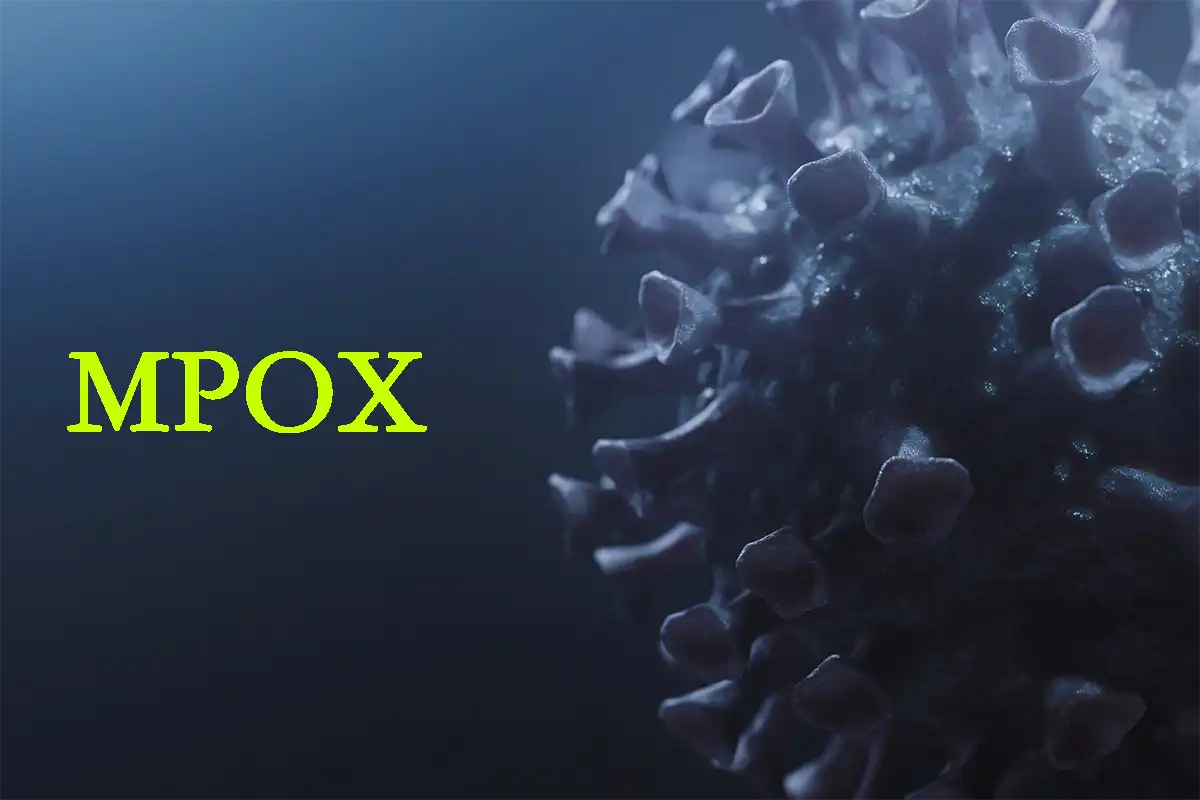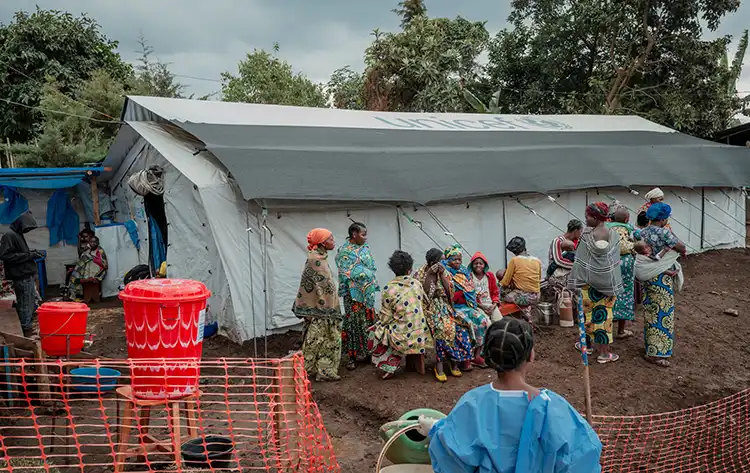
What is Monkeypox?
Monkeypox is a disease caused by the monkeypox virus. It is a viral infection that can spread between people primarily through close contact, and occasionally through contact with objects and surfaces that have been touched by a person with monkeypox. In environments where the monkeypox virus is present in certain wild animals, it can also be transmitted to humans who come into contact with infected animals.
Following a series of consultations with global experts, the World Health Organization (WHO) has begun using the new preferred term “mpox” as a synonym for “monkeypox” in English.

What are the Symptoms of Monkeypox?
Monkeypox can cause a range of signs and symptoms. While some people may experience mild symptoms, others may develop more severe illness requiring medical attention. Common symptoms of monkeypox include a rash that may last 2-4 weeks. The illness may begin with or be followed by fever, headache, muscle aches, back pain, fatigue, and swollen lymph nodes. The rash can appear as blisters or sores and may affect the face, palms, soles of the feet, groin, genitals, and/or anal area. These lesions can also occur in the mouth, throat, anus, rectum, vagina, or eyes. The number of sores can range from one to several thousand. Some people may experience inflammation in the rectum (proctitis), which can cause severe pain, as well as genital inflammation that may lead to difficulty urinating.
In most cases, symptoms of monkeypox resolve on their own within a few weeks with supportive care, such as antipyretics and analgesics. However, some individuals may develop severe disease or complications, and in rare cases, death may occur. Newborns, children, pregnant women, and individuals with underlying immune deficiencies (such as advanced HIV/AIDS) are at higher risk of severe monkeypox and death.
Severe cases of monkeypox may include extensive lesions (particularly in the mouth, eyes, and genitals), secondary bacterial infections of the skin or blood, and lung infections. Complications can include severe bacterial infections from skin lesions, encephalitis (inflammation of the brain), myocarditis (inflammation of the heart), pneumonia (inflammation of the lungs), and eye problems. Patients with severe monkeypox may require hospitalization, supportive care, and antiviral medications to reduce the severity of lesions and shorten recovery time.
Based on available data, the case fatality rate for monkeypox ranges from 0.1% to 10%. It is important to note that mortality rates may vary depending on factors such as access to healthcare and underlying immune suppression, including undiagnosed HIV infection or advanced AIDS.
How Does Monkeypox Spread?

Human-to-Human Transmission:
Monkeypox primarily spreads between people through close contact with an infected individual. Close contact includes skin-to-skin contact (such as touching or sexual activity), mouth-to-mouth or mouth-to-skin contact (such as kissing), and face-to-face contact (such as talking or being in close proximity, which may generate infectious respiratory particles). During the global outbreak that began in 2022, the virus was primarily transmitted through sexual contact. More research is needed to understand how monkeypox spreads in different environments and under various conditions during an outbreak.
A person with monkeypox is considered infectious until all lesions have crusted over, the scabs have fallen off, and a new layer of skin has formed underneath. Lesions in the eyes and internal areas (such as the mouth, throat, vagina, and anus) must also heal completely (usually taking 2-4 weeks).
The virus can also persist on clothing, bedding, towels, objects, electronic devices, and surfaces that have been touched by a person with monkeypox. Others may become infected if they come into contact with these items, especially if they have any cuts or abrasions, or if they touch their eyes, nose, mouth, or other mucous membranes before washing their hands. Cleaning and disinfecting surfaces/objects and washing hands after potential exposure can help prevent this type of transmission.
The virus can also be transmitted from a pregnant person to the fetus, during or after birth through skin-to-skin contact, or from a parent with monkeypox to an infant or child.
Although there have been reports of monkeypox transmission from asymptomatic individuals, information on whether the virus can be spread before symptoms appear or after lesions have healed is still limited. While live virus has been isolated in semen, it is not yet clear to what extent infection can be transmitted through semen, vaginal fluids, amniotic fluid, breast milk, or blood.
Animal-to-Human Transmission:
People who come into physical contact with animals carrying the virus (such as certain species of monkeys or terrestrial rodents like tree squirrels) may also contract monkeypox. Exposure through contact with animals or animal products can occur through bites or scratches, or during activities such as hunting, skinning, trapping, or preparing meals. Consuming undercooked contaminated meat may also lead to infection.
To reduce the risk of contracting monkeypox from animals, avoid unprotected contact with wildlife, especially sick or dead animals (including their meat and blood). In countries where animals carry the virus, any food containing animal parts or meat should be thoroughly cooked before consumption.
Human-to-Animal Transmission:
There have been reports of the virus being detected in pet dogs. However, it has not been confirmed whether these cases represent true infections or surface contamination.
Since several animal species are known to be susceptible to the virus, there is a possibility of spillback transmission from humans to animals in different settings. Individuals with confirmed or suspected monkeypox should avoid close physical contact with animals, including pets (cats, dogs, hamsters, gerbils), livestock and wildlife.
For more detailed recommendations for pet owners and those working with animals, refer to the World Organization for Animal Health guidelines on reducing the risk of monkeypox virus spillback.
How Can You Protect Yourself and Others from Monkeypox?
To protect yourself and others from monkeypox, be aware of the signs and symptoms, how the virus spreads, what to do if you become ill, and the risks in your local area or community.
If the virus is circulating in your area or community, have open conversations with close contacts about any symptoms you or they may have. Avoid close contact, including sexual contact, with anyone who has monkeypox. Regularly clean your hands with soap and water or an alcohol-based hand sanitizer.
If you think you may have monkeypox, use a rapid test and seek medical attention. Isolate yourself from others until you have been evaluated and received test results to prevent spreading the virus. If you have monkeypox, you should isolate until all your lesions have crusted over, the scabs have fallen off, and a new layer of skin has formed underneath. This will prevent you from transmitting the virus to others. Follow local health authority guidelines on whether to isolate at home or in a healthcare facility. For up to 12 weeks (about 3 months) after recovery, use condoms as a precaution during sexual activity.
In countries where certain animals are known to carry the monkeypox virus (i.e., some countries in East, Central, and West Africa), avoid unprotected contact with wildlife, especially sick or dead animals (including their meat and blood), to protect yourself. Any food containing animal parts or meat should be thoroughly cooked before consumption.
What Care Do People with Monkeypox Need to Fully Recover?
The care required depends on the patient’s symptoms and their risk of severe disease. Individuals with monkeypox should follow the advice of their healthcare provider. Symptoms typically last 2-4 weeks and often resolve on their own or with supportive care, such as analgesics or antipyretics (e.g., pain relievers and fever reducers).
For all monkeypox patients recovering at home, it is important to stay hydrated, eat well, and get plenty of rest. Those in self-isolation should engage in activities that help them relax and stay mentally healthy. Use technology to stay connected with loved ones, exercise if you feel well enough, and seek mental health support if needed.
Patients with monkeypox should avoid scratching their skin and clean their hands before and after touching lesions. Keep the skin dry and uncovered (unless you cannot avoid being in the same room as others, in which case cover the lesions with clothing or bandages until you can isolate again). Rashes can be cleaned with sterilized or antiseptic water. Sores in the mouth can be rinsed with salt water, and warm baths with baking soda or Epsom salts may help relieve discomfort from body sores. If necessary, paracetamol can be used to alleviate pain from lesions. For stronger pain relief, consult a healthcare provider.
Refer to this infographic on home recovery from monkeypox for useful tips.
